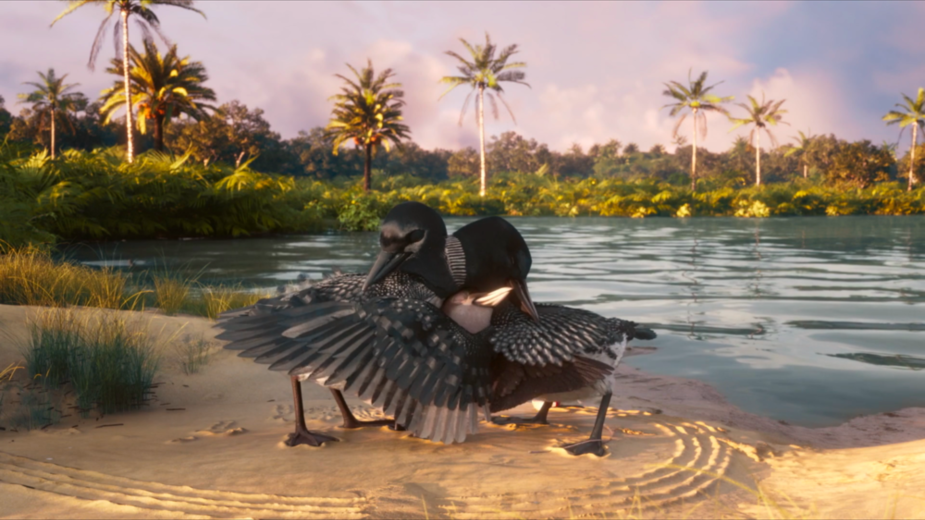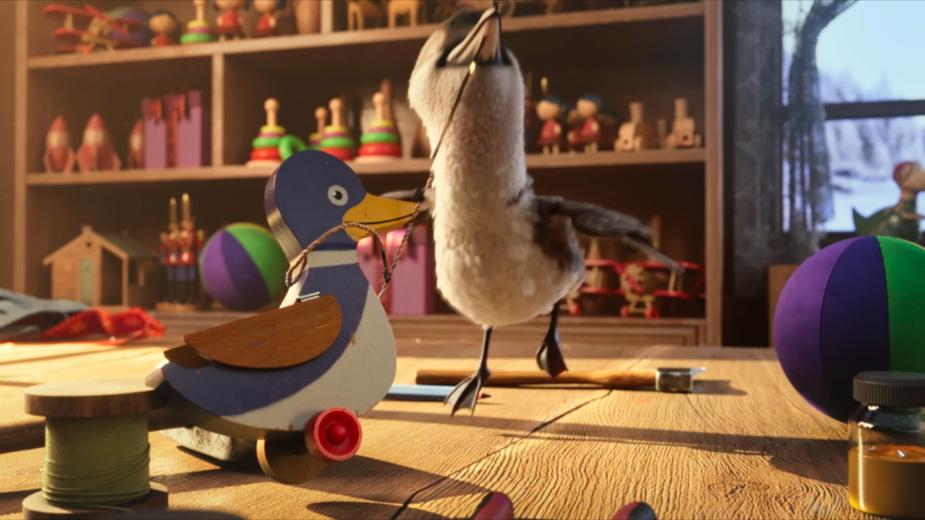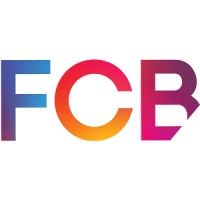
How Air Canada and FCB Created a Heartfelt Holiday Spot

While in the Northern Hemisphere, the holiday nights are the longest of the year - dark, cold and often snowy - it’s the simple comforts of things like lights, baked goodies and time spent with loved ones that truly make the season bright. In the case of the latter, Air Canada wanted to remind Canadians that it’ll always be there to bring loved ones together, no matter how separated they are by distance.
Continuing its partnership with FCB Toronto, the two worked together to create ‘Together for the Holidays’, the story of a baby loon who gets separated from its family by a strong gust of wind on their annual journey south. Animated by the team at Zombie, the project took 11 weeks to produce, and is set to music from two Canadian artists: ‘Where You Are’ by acclaimed Canadian country singer Tenille Townes, and ‘Les Échardes’ by four-time Juno Award winner Charlotte Cardin.
To learn more, LBB’s Josh Neufeldt sat down with the team at FCB Toronto, including executive creative directors Jeremiah McNama and Andrew MacPhee, VP of strategy Shelagh Hartford and account director Rose Noble, Air Canada’s VP, brand Andy Shibata, and creative director and partner at Zombie, Paulo Garcia, discussing how this heartfelt holiday spot came to be.
LBB> This spot represents the continued tradition of Air Canada running heartfelt holiday ads. As such, what was the brief, and what immediate ideas came to mind?
Andy> FCB has been our partner for a number of years, helping us build our brand and create communications for a number of important initiatives each and every year. The holiday season is the chance to reunite and reconnect with loved ones, and each year we work with FCB to try and capture the spirit of the holidays and how being together with friends and family can be truly magical.
Shelagh> 2022 wasn’t an easy year for travel or the travel industry. There was an incredible amount of pent-up consumer demand, yet still a lot of nerves and stress about what might happen on a trip. But the holidays offer a sense of hope and optimism, and an emotionally driven reason to hop on a plane: the chance to reunite with loved ones.
As such, we knew right away that we wanted to tell a story about togetherness, and the magic of being amongst loved ones during the holiday season. All of our thinking - right from the beginning - was anchored in that focus on why travel matters so much to all of us. We’ve been building heartfelt stories about being together for the last few years with Air Canada, and this year, that message seemed more important than ever.
LBB> Creating an animated spot is no small task. Where does one start with an endeavour like this, and how did the idea develop?
Andrew> The first and most important place we started was finding a production company with a track record in high-level animated craft. Second was partnering with people who shared the same passion for the story as we did - and Zombie checked both boxes. But more than that, working with the team was excellent.
When working with animation, the idea develops in different ways than live action. Zombie quickly started elevating the spot in ways we don't typically think of. For example, creating the ‘light script’ was a real eye-opener. In this case, the entire film had a dedicated script that set the mood for each scene based on lighting, which greatly added to the overall emotion of the story.

LBB> What made animation the right creative medium for the spot?
Andrew> The combination of the scale, emotion and holiday magic needed to bring this spot to life made animation the only choice. A film where its main characters are a young loon and a toy duck greatly benefited from it. We would never have been able to get the emotional connection or expressions from live action or any other medium, and frankly, thinking about doing this live action stresses me out.
Andy> We wanted the audience to connect to the characters, and animation gave us complete control over the environments, scenes, and expressions. There’s also a magical quality that comes with using animation, and of course, the holidays are all about magic.
LBB> Where did the idea for a baby loon come from? Did you immediately know that was the right animal for the spot, or were there other ideas under consideration?
Jeremiah> We wrote dozens of stories that incorporated every kind of holiday character you could imagine. This particular story always focused on a bird, but we went back and forth on which one. In the end, we went with the loon as it’s such an iconic Canadian animal (without being cliché), and the loon call is a sound that so many Canadians identify with.
LBB> Watching the loon mess about Santa’s workshop was very cute. How did you come up with these specific scenarios?
Jeremiah> The second act of the story focuses on building the connection between the loon and his newfound friend. We wanted scenes that were playful and made you fall in love with the characters. The baby loon teaching the toy duck how to fly and the two sharing Christmas leftovers together was a great way to build a connection.

LBB> Following the development of the script, what immediate animation ideas came to mind when you first saw it?
Paulo> Christmas scripts always have this heartwarming kind of story, but this one caught my attention because of its very simple concept of an unlikely friendship, and the chance to explore the Christmas icon that is Santa (and his house) in a very particular way: less fantastic, closer to reality. As soon as I finished reading it, I remember saying to myself, ‘OK! Now we have a beautiful story to tell, but are we good to jump into a production where the main character needs to be as close as possible to a real baby loon? What are the boundaries that we can cross to make this bird charming without losing this?’. From that moment, I knew this was going to be the hardest character to bring to life.
LBB> What was the initial concepting process like? How did the work evolve?
Paulo> Our first goal was to design both main characters: the baby loon and the wooden duck. As I mentioned before, they needed to be as close as possible to reality, while still being charismatic.
While drawing the characters was easier than I expected, the real challenge started when we did our very first animation tests with both. We faced the difficult challenge of trying to make the baby loon walk and move like a real bird, with his eyes and head moving in a more human way. As such, several tests were needed until we defined it, but they were well worth the effort! Today, when I watch the spot, I can see this character and feel all the emotions that he has at every single moment in the story - loneliness when he is lost, the joy of finding company in such a tiny wooden duck, and how their friendship evolves throughout the story. It’s delicate, beautiful, and exactly what we were looking for.
LBB> Tell us more about what it takes to illustrate and animate a spot like this! How long did it take, and how did the process go?
Paulo> In the beginning, I was more concerned about the external scenes and how realistic we could be. Showing mountains, lakes, clouds, and all the complex things in CGI involves a lot of different programs and simulations, so we had a huge technical team involved, as well as an amazing environment artist who’s very familiar with this kind of work. We then needed to export and combine this with the animation of the characters, which had been created in yet another software. These exchanges - combining work from different software - can be painful if not well planned, but luckily, everything went seamlessly.
What I was not expecting, however, was the huge amount of work it would take to bring Santa’s workshop to life. Although we did some initial concept art when trying to imagine the place, when we jumped from concept to modelling, I realised just how big a team we’d require to make every single prop in the workshop look beautiful. More than 30 artists were involved in this phase of the project - texturising the workshop and all the toys, working hard to make sure those elements were rich in detail, and being sure to avoid a cartoonish look.
Our next big challenge was to make the loons. Feathers and fur are always a challenge for a CGI project, because there’s no magical tool that can cover a character with feathers in an instant. Moreover, this is not a kind of work that can be done by multiple artists. As such, we had only two artists involved in this phase, who designed each and every bird feather by feather. Almost five weeks were spent on this process, and once they had finished, we had to ensure that when we applied the feathers to the final character animation, it looked perfect. Again, this took a considerable amount of time, as the technical team had to ensure the loons’ feathers worked in every scene. To do this, we rendered the scenes in lower resolutions to identify and then solve the problems, before moving on to the final render - a process that took patience from everyone involved.
Finally, we moved onto the animation. We had several internal meetings to find the style of the animation for the birds, and settled on pursuing something close to the real world, but with all the charm of classical animation. One of the key decisions at this stage was that the loon had to peck things. Whether he’s opening doors or playing with the wooden duck, he never uses his wings as hands, because he’s always using his beak as his main tool. While it’s easy to see now, in getting there, we tested a number of options that would not have worked well. However, all these tests made the entire process easier, as when we distributed the scenes to the different animation artists, they all had a clear path to follow.
In the end, planning was the key to the success of the project. From the initial briefing to the delivery of the project, we had only 11 weeks. It’s a record for this kind of animation.

LBB> The sound design is also incredible - both the loon sounds and the musical selection! How did you bring this aspect of the spot to life?
Jeremiah> Our audio partner, OSO, put a lot of time and craft into making sound a character in the film. They even bought a loon flute to create loon calls that sounded natural, but had emotion.
All credit also goes to OSO for finding the Tenille Townes track. Not only is she Canadian, but the song hits the right emotional chord, and the lyrics speak to reconnecting without being too on the nose. It was the perfect choice.
Meanwhile, for the French version, Charlotte Cardin was actually a suggestion from our client. She blew up during the pandemic and Air Canada has a long tradition of tapping into fantastic Quebec artists.
LBB> Are there any elements of the project you’re particularly proud of?
Paulo> Honesty, I’m proud of everything in this spot. I love all the magical moments that we created with this baby loon and his family. It’s always incredible when you manage to skip all the technical problems and can be more attached to the details of the storytelling, the beauty of the photography in every single shot, and things that really matter to the audience. Seeing all the positive comments from the viewers and how they reacted to the spot was amazing. Big kudos here for the entire client, agency, and Zombie team. This one was not an easy one to do, but the final result is stunning. Proud, proud, proud!
LBB> What challenges have you faced during this project? How did you overcome them?
Jeremiah> Time was our biggest challenge by far, and unfortunately, Christmas can’t be pushed. Zombie and Wonderlust had a team of over a hundred to make our deadline. Partnering with them was the best decision we made.
Andy> Creating an animation with this level of detail comes with a lot of challenges. With all the aligning to storyboards, animatics, characters, and prop design, it’s a lengthy process. It’s also high stakes because once you make a decision there’s no going back. You have to trust your gut.
LBB> How have people reacted to this campaign?
Rose> Reaction has been overwhelmingly positive. There have been a lot of comments about the spot across channels, talking about how emotional it is and how some people have watched this over and over again and love hearing the call of the loon.
Andy> Since the launch of our holiday campaign, we are pleased to see that Canadians across the country share the same heartfelt sentiment towards this year’s story, ‘Together for the Holidays’. We believe this feeling comes from the shared experience and reflection that being together for the holidays is the greatest gift of all.

LBB> Is there anything you’d like to add?
Andrew> Working with Zombie was excellent. Not only are they incredibly collaborative, but their process to keep us on track was a life saver. There were zero egos in the room, only shared passion to make this film the best it could be. They were a dream team.
Andy> Air Canada is proud to play a role in the magical moments of uniting family and friends. Whether it’s restarting old traditions or creating new long-lasting memories, we are proud to help bring Canadians together to celebrate the holidays, and understand how being together for the holidays is the greatest gift of all.
Paulo> Thank you so much LBB for inviting us to talk about this incredible spot. There’s so much work and love behind this film. The chance to talk about it - it’s the best reward we could have.













